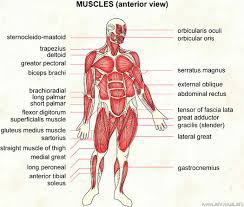
 Hello, Orders of Magnitude readers! I thought I would take this opportunity to let you know about a post on my personal blog over at mandyqualls.com. It’s about my recent melanoma diagnosis, subsequent surgery, and what I’ve learned in the process. Head on over to and let me know what you think. I’d go through that process all over again if I can help at least one person save themselves from skin cancer.
Hello, Orders of Magnitude readers! I thought I would take this opportunity to let you know about a post on my personal blog over at mandyqualls.com. It’s about my recent melanoma diagnosis, subsequent surgery, and what I’ve learned in the process. Head on over to and let me know what you think. I’d go through that process all over again if I can help at least one person save themselves from skin cancer.
Last year, the world saw the largest recorded outbreak of the hemorrhagic fever Ebola unfold. As of the day of this post, 11, 163 people have died as a result of the outbreak. West Africa had the most of the affected countries, although the United States, the United Kingdom, and Spain had cases of Ebola as well. Although the Ebola outbreak still lingers in West Africa, we continue to see a decrease in the number of overall cases. Enough time has passed since the height of the outbreak that we can take a look back at some lessons learned. Read on for my take from a public health perspective. Continue Reading
Hey readers! Over on my blog, I’ve got a post up about some of my favorite things about 2014. It includes music and my favorite science story of the year, so head on over to the blog and let me know what you think. Look for more great things from the Orders of Magnitude blog this next year, and happy 2015!
They help us move, digest our food, and keep us alive. Here’s a post in celebration of those hunks of meat between our bones.
When you think of muscles, you probably think of something like these:
But when I think of muscles, I think of things like this:
 The illustration above is a fairly detailed look at the way a muscle contracts.
The illustration above is a fairly detailed look at the way a muscle contracts.
A bit of background about myself: I received an M.S. in Health and Exercise Science and a B.S. in Athletic Training. I know how muscles are supposed to work down to the super minute detail. Needless to say, I stared at a lot of diagrams like this one except with more letters and some numbers.
Anyway, like pretty much everything in the human body, muscles are complicated. But the basic mechanism is the same in humans and other animals: muscles move our body, move food through our digestive track, and keep out heart beating.
So we get the main gist of what muscles do. Let’s take a look at exactly how muscles work.
Russian Meteor
No story from this past year captured my attention and fascination like the meteor that fell in Chelyabinsk, Russia. On February 15, in the early morning sky, a 19-meter-long piece of rock from the outer reaches of the solar system came crashing into the early morning sky. Let’s just take a look at some of the footage captured by numerous dash cams (on a side note–thanks to all the insurance-conscious Russians for installing dash cams!):
Not only was this falling meteor an absolute beautiful thing to watch, but meteors of this size are relatively rare and don’t usually land in a populated place. This was a wonderful scientific opportunity to study this event with numerous videos, GPS data, and real-time coverage via social media.
But the event was not over.
UPDATE 12/4/13: Well, the human fangirl side of me is disappointed to announce that as of yesterday, NASA officially declared Comet ISON dead. But, the scientist in me is excited that there is so much data to pore over from the breakup of this comet very near the sun. With so many instruments following this comet, we have more capability now more than ever to view the makeup of this ancient comet, where it came from, and maybe will teach us more about comets in general. What a fascinating little comet, and even though I won’t be able to watch it selfishly in my night sky, I still feel very lucky to have been around to witness its demise.
Right now, there is a comet well on its way to the sun. Will it survive its journey, which has been millions of years in the making? And if it does, will we ever see it again?
Astronomers have been tracking comet ISON for quite a while now and many had predicted it would be one of the brightest observed comets for many years. While we haven’t seen the expected brightness from ISON yet, that may change if it survives its trip around the Sun.
We will find out this Thanksgiving. On a NASA audio press conference today, many astronomers were offering their “bets” as to whether comet ISON would survive, with many giving it a 30-40% chance of survival. This comet has been fascinating from a scientific standpoint – many scientists use the words “odd” and have said it has behaved quite strangely. Of course, that only piques scientific interest all the more.
It’s important to note at this point that you very likely won’t be able to see anything on Thanksgiving, what with the whole staring into the sun and all. I, for one, will be letting NASA’s instruments do the work for me. There are some great resources for watching Comet ISON online, including from .
IF it survives — again, this is the big IF — it is expected to be visible again in the Northern Hemisphere around the 1st or 2nd week of December. Even more awesome – it will be visible during sunrise AND sunset (before it became too close to the Sun, it’s only been visible at sunrise). UPDATED: There is some confusion as to this point that was brought up during the press conference. I’ll continue to keep you updated.
YOU MIGHT ALSO LIKE












